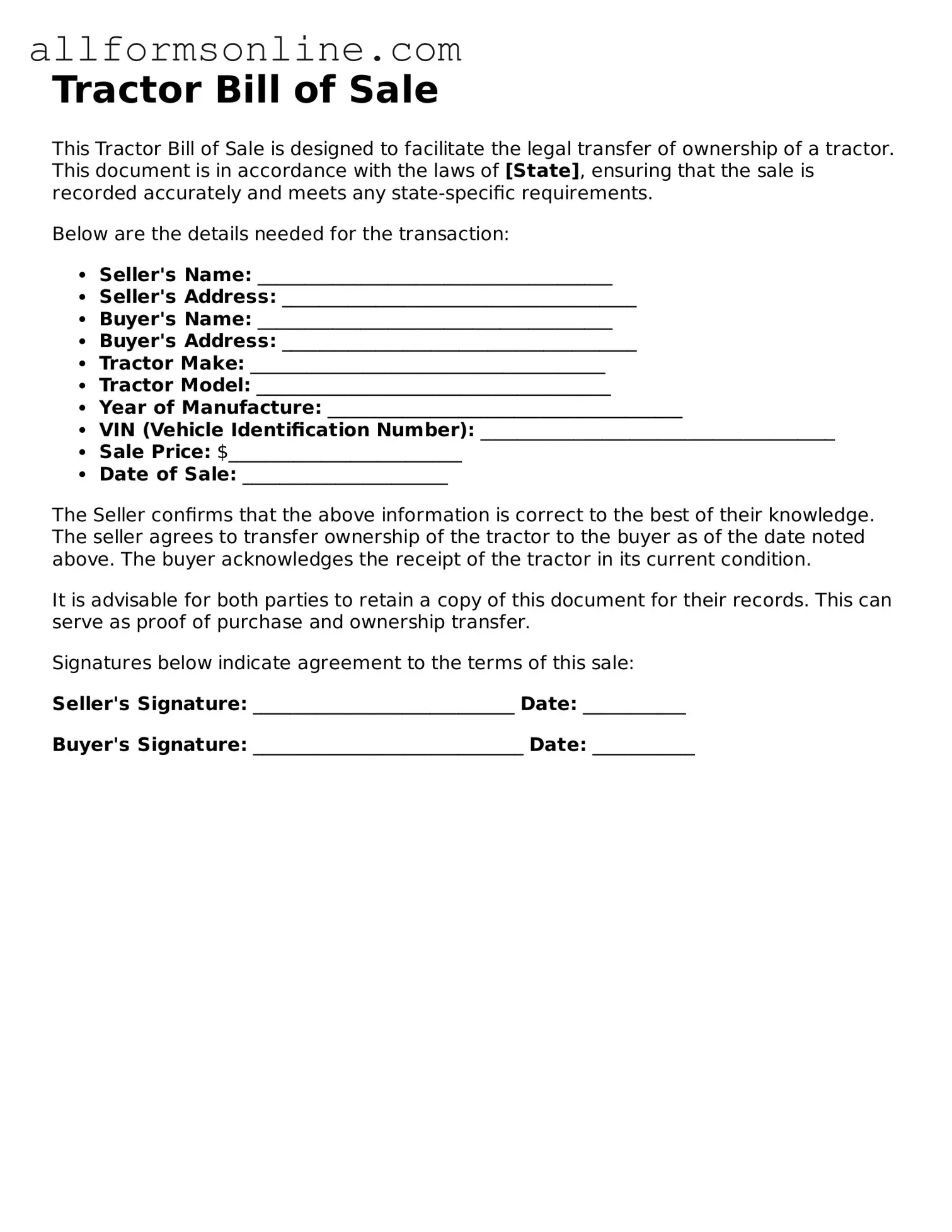What is a Tractor Bill of Sale?
A Tractor Bill of Sale is a legal document that serves as a record of the sale and transfer of ownership of a tractor from one party to another. This form typically includes important details such as the names and addresses of both the buyer and seller, the tractor's identification number, make, model, year, and the sale price. It is essential for both parties to have a copy for their records.
Why do I need a Tractor Bill of Sale?
This document is crucial for establishing proof of ownership. If you ever need to register the tractor, apply for insurance, or resolve any disputes regarding the sale, having a Bill of Sale can provide the necessary evidence. It also protects both the buyer and seller by clearly outlining the terms of the transaction.
How do I fill out a Tractor Bill of Sale?
To complete the form, start by entering the date of the transaction. Next, include the full names and addresses of both the seller and buyer. Then, provide details about the tractor, such as the make, model, year, and Vehicle Identification Number (VIN). Finally, indicate the sale price and any conditions of the sale, such as whether the tractor is sold "as-is." Both parties should sign and date the document.
Is a Tractor Bill of Sale required by law?
While not all states legally require a Bill of Sale for the purchase of a tractor, it is highly recommended. Some states may have specific regulations regarding the sale of vehicles and equipment, which may include the necessity of a Bill of Sale. Check your local laws to ensure compliance.
Can I use a generic Bill of Sale form for my tractor?
Yes, a generic Bill of Sale can be used, but it is advisable to use a specific Tractor Bill of Sale form. This ensures that all relevant details specific to the tractor and the sale are included. A tailored form can help avoid any potential misunderstandings between the buyer and seller.
What should I do after completing the Tractor Bill of Sale?
Once the Bill of Sale is completed and signed by both parties, each should retain a copy for their records. The seller may also need to notify their local Department of Motor Vehicles (DMV) or equivalent authority about the sale, especially if the tractor is registered. The buyer should keep the document safe, as it may be required for future registration or insurance purposes.
Can I cancel a Tractor Bill of Sale?
Generally, a Bill of Sale is a binding agreement once signed by both parties. However, if both the buyer and seller agree to cancel the sale, they can draft a cancellation agreement. It is advisable to document this agreement in writing to avoid any future disputes. If there are issues with the sale, legal advice may be necessary to understand your options.
